Budgeted Batch Mode Active Learning with Generalized Cost and Utility Functions
Arvind Agarwal,
Shashank Mujumdar,
Nitin Gupta,
Sameep Mehta

Auto-TLDR; Active Learning Based on Utility and Cost Functions
Similar papers
Leveraging Sequential Pattern Information for Active Learning from Sequential Data
Raul Fidalgo-Merino, Lorenzo Gabrielli, Enrico Checchi
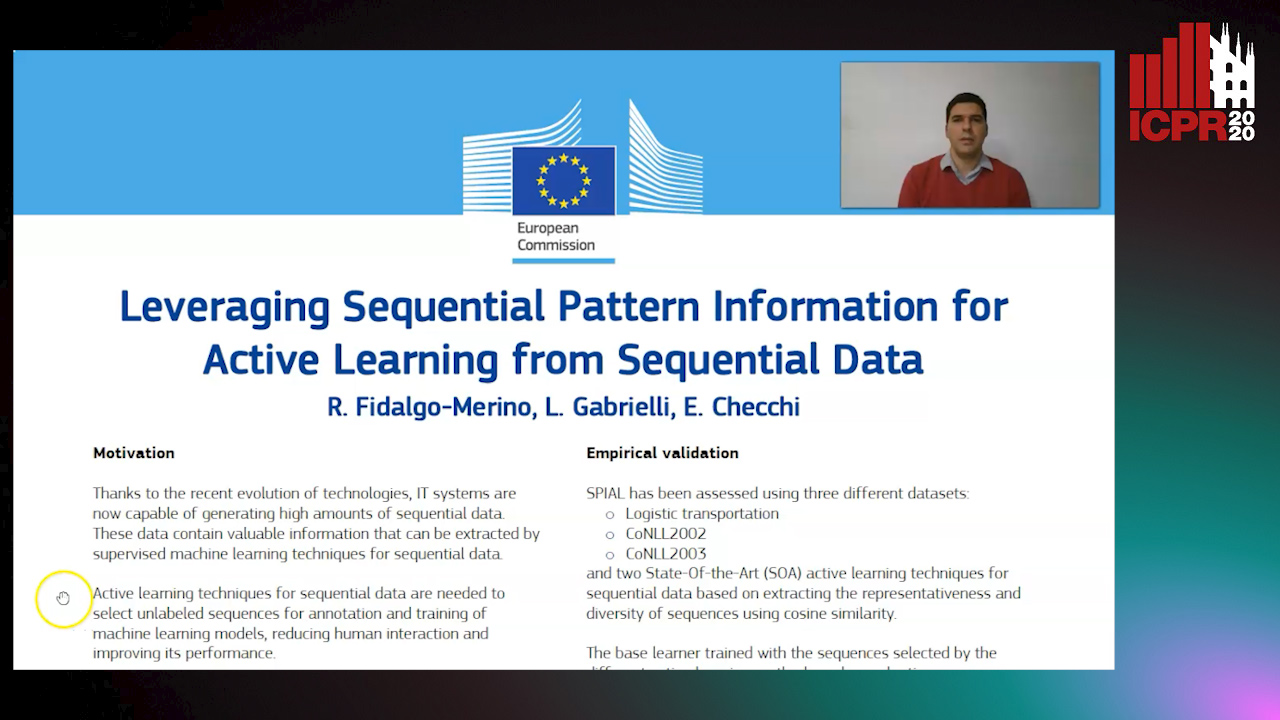
Auto-TLDR; Sequential Pattern Information for Active Learning
Abstract Slides Poster Similar
Multi-annotator Probabilistic Active Learning
Marek Herde, Daniel Kottke, Denis Huseljic, Bernhard Sick

Auto-TLDR; MaPAL: Multi-annotator Probabilistic Active Learning
Abstract Slides Poster Similar
Rethinking Deep Active Learning: Using Unlabeled Data at Model Training
Oriane Siméoni, Mateusz Budnik, Yannis Avrithis, Guillaume Gravier
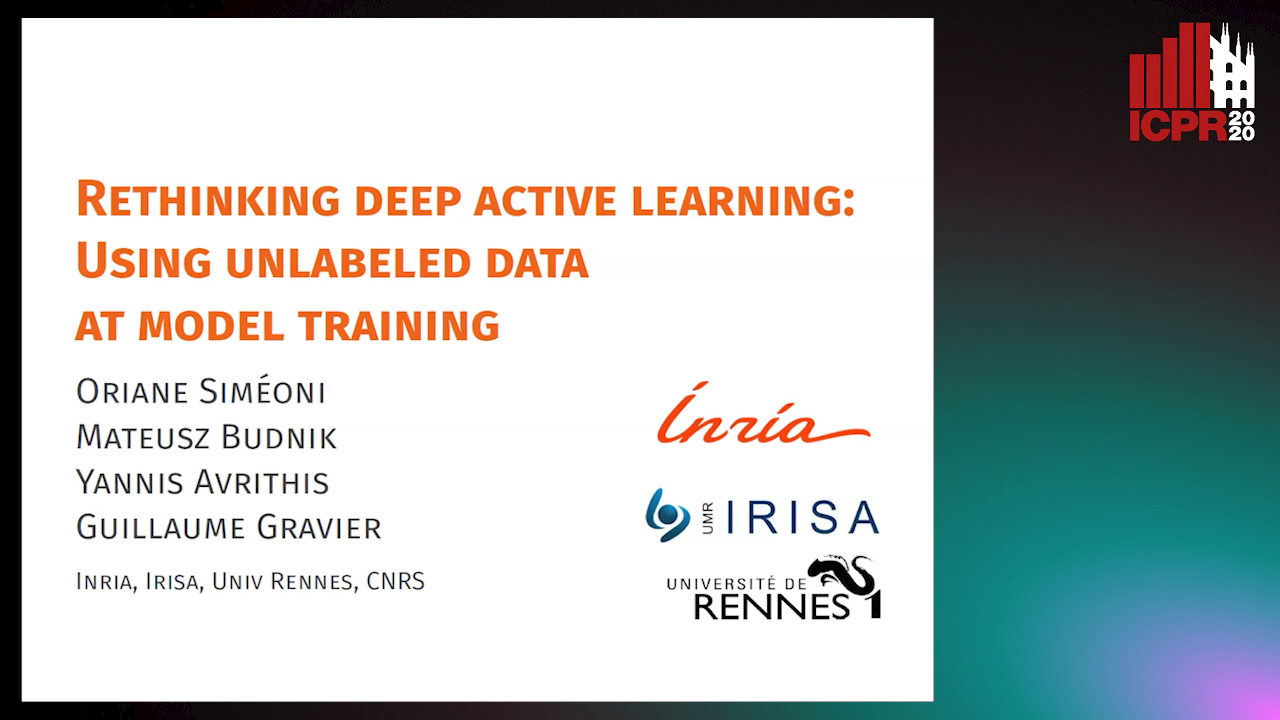
Auto-TLDR; Unlabeled Data for Active Learning
Abstract Slides Poster Similar
Minority Class Oriented Active Learning for Imbalanced Datasets
Umang Aggarwal, Adrian Popescu, Celine Hudelot
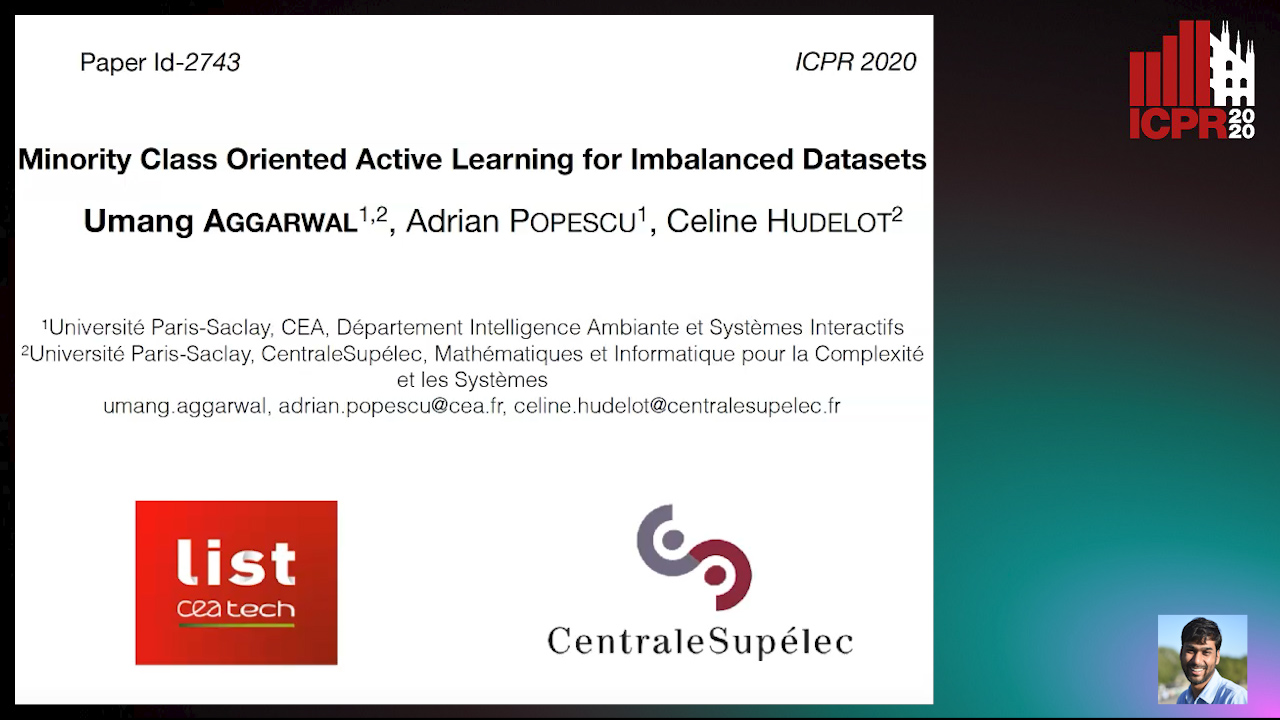
Auto-TLDR; Active Learning for Imbalanced Datasets
Abstract Slides Poster Similar
Learning to Rank for Active Learning: A Listwise Approach
Minghan Li, Xialei Liu, Joost Van De Weijer, Bogdan Raducanu
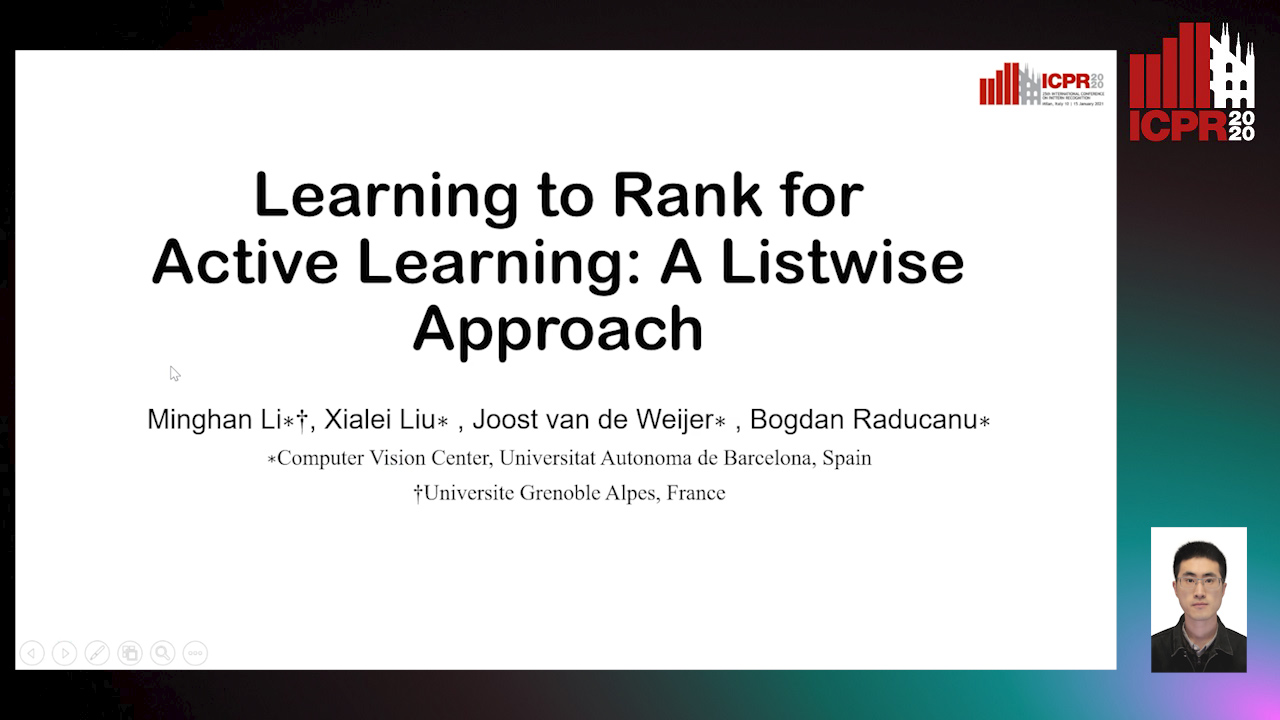
Auto-TLDR; Learning Loss for Active Learning
Active Sampling for Pairwise Comparisons via Approximate Message Passing and Information Gain Maximization
Aliaksei Mikhailiuk, Clifford Wilmot, Maria Perez-Ortiz, Dingcheng Yue, Rafal Mantiuk

Auto-TLDR; ASAP: An Active Sampling Algorithm for Pairwise Comparison Data
Factor Screening Using Bayesian Active Learning and Gaussian Process Meta-Modelling
Cheng Li, Santu Rana, Andrew William Gill, Dang Nguyen, Sunil Kumar Gupta, Svetha Venkatesh

Auto-TLDR; Data-Efficient Bayesian Active Learning for Factor Screening in Combat Simulations
Adaptive Sampling of Pareto Frontiers with Binary Constraints Using Regression and Classification

Auto-TLDR; Adaptive Optimization for Black-Box Multi-Objective Optimizing Problems with Binary Constraints
Bayesian Active Learning for Maximal Information Gain on Model Parameters
Kasra Arnavaz, Aasa Feragen, Oswin Krause, Marco Loog

Auto-TLDR; Bayesian assumptions for Bayesian classification
Abstract Slides Poster Similar
3CS Algorithm for Efficient Gaussian Process Model Retrieval
Fabian Berns, Kjeld Schmidt, Ingolf Bracht, Christian Beecks

Auto-TLDR; Efficient retrieval of Gaussian Process Models for large-scale data using divide-&-conquer-based approach
Abstract Slides Poster Similar
Watermelon: A Novel Feature Selection Method Based on Bayes Error Rate Estimation and a New Interpretation of Feature Relevance and Redundancy

Auto-TLDR; Feature Selection Using Bayes Error Rate Estimation for Dynamic Feature Selection
Abstract Slides Poster Similar
A Randomized Algorithm for Sparse Recovery
Huiyuan Yu, Maggie Cheng, Yingdong Lu

Auto-TLDR; A Constrained Graph Optimization Algorithm for Sparse Signal Recovery
Automatically Mining Relevant Variable Interactions Via Sparse Bayesian Learning
Ryoichiro Yafune, Daisuke Sakuma, Yasuo Tabei, Noritaka Saito, Hiroto Saigo

Auto-TLDR; Sparse Bayes for Interpretable Non-linear Prediction
Abstract Slides Poster Similar
The eXPose Approach to Crosslier Detection
Antonio Barata, Frank Takes, Hendrik Van Den Herik, Cor Veenman

Auto-TLDR; EXPose: Crosslier Detection Based on Supervised Category Modeling
Abstract Slides Poster Similar
Weakly Supervised Learning through Rank-Based Contextual Measures
João Gabriel Camacho Presotto, Lucas Pascotti Valem, Nikolas Gomes De Sá, Daniel Carlos Guimaraes Pedronette, Joao Paulo Papa

Auto-TLDR; Exploiting Unlabeled Data for Weakly Supervised Classification of Multimedia Data
Abstract Slides Poster Similar
Aggregating Dependent Gaussian Experts in Local Approximation

Auto-TLDR; A novel approach for aggregating the Gaussian experts by detecting strong violations of conditional independence
Abstract Slides Poster Similar
Adaptive Matching of Kernel Means

Auto-TLDR; Adaptive Matching of Kernel Means for Knowledge Discovery and Feature Learning
Abstract Slides Poster Similar
A Multilinear Sampling Algorithm to Estimate Shapley Values

Auto-TLDR; A sampling method for Shapley values for multilayer Perceptrons
Abstract Slides Poster Similar
Iterative Label Improvement: Robust Training by Confidence Based Filtering and Dataset Partitioning
Christian Haase-Schütz, Rainer Stal, Heinz Hertlein, Bernhard Sick

Auto-TLDR; Meta Training and Labelling for Unlabelled Data
Abstract Slides Poster Similar
Hierarchical Routing Mixture of Experts
Wenbo Zhao, Yang Gao, Shahan Ali Memon, Bhiksha Raj, Rita Singh

Auto-TLDR; A Binary Tree-structured Hierarchical Routing Mixture of Experts for Regression
Abstract Slides Poster Similar
A Novel Random Forest Dissimilarity Measure for Multi-View Learning
Hongliu Cao, Simon Bernard, Robert Sabourin, Laurent Heutte

Auto-TLDR; Multi-view Learning with Random Forest Relation Measure and Instance Hardness
Abstract Slides Poster Similar
Memetic Evolution of Training Sets with Adaptive Radial Basis Kernels for Support Vector Machines
Jakub Nalepa, Wojciech Dudzik, Michal Kawulok

Auto-TLDR; Memetic Algorithm for Evolving Support Vector Machines with Adaptive Kernels
Abstract Slides Poster Similar
An Efficient Empirical Solver for Localized Multiple Kernel Learning Via DNNs

Auto-TLDR; Localized Multiple Kernel Learning using LMKL-Net
Abstract Slides Poster Similar
3D Semantic Labeling of Photogrammetry Meshes Based on Active Learning
Mengqi Rong, Shuhan Shen, Zhanyi Hu

Auto-TLDR; 3D Semantic Expression of Urban Scenes Based on Active Learning
Abstract Slides Poster Similar
Adversarial Encoder-Multi-Task-Decoder for Multi-Stage Processes
Andre Mendes, Julian Togelius, Leandro Dos Santos Coelho

Auto-TLDR; Multi-Task Learning and Semi-Supervised Learning for Multi-Stage Processes
Position-Aware Safe Boundary Interpolation Oversampling

Auto-TLDR; PABIO: Position-Aware Safe Boundary Interpolation-Based Oversampling for Imbalanced Data
Abstract Slides Poster Similar
Sketch-Based Community Detection Via Representative Node Sampling
Mahlagha Sedghi, Andre Beckus, George Atia

Auto-TLDR; Sketch-based Clustering of Community Detection Using a Small Sketch
Abstract Slides Poster Similar
On Learning Random Forests for Random Forest Clustering
Manuele Bicego, Francisco Escolano

Auto-TLDR; Learning Random Forests for Clustering
Abstract Slides Poster Similar
On Resource-Efficient Bayesian Network Classifiers and Deep Neural Networks
Wolfgang Roth, Günther Schindler, Holger Fröning, Franz Pernkopf

Auto-TLDR; Quantization-Aware Bayesian Network Classifiers for Small-Scale Scenarios
Abstract Slides Poster Similar
Uniform and Non-Uniform Sampling Methods for Sub-Linear Time K-Means Clustering

Auto-TLDR; Sub-linear Time Clustering with Constant Approximation Ratio for K-Means Problem
Abstract Slides Poster Similar
Classifier Pool Generation Based on a Two-Level Diversity Approach
Marcos Monteiro, Alceu Britto, Jean Paul Barddal, Luiz Oliveira, Robert Sabourin

Auto-TLDR; Diversity-Based Pool Generation with Dynamic Classifier Selection and Dynamic Ensemble Selection
Abstract Slides Poster Similar
Algorithm Recommendation for Data Streams
Jáder Martins Camboim De Sá, Andre Luis Debiaso Rossi, Gustavo Enrique De Almeida Prado Alves Batista, Luís Paulo Faina Garcia

Auto-TLDR; Meta-Learning for Algorithm Selection in Time-Changing Data Streams
Abstract Slides Poster Similar
Low-Cost Lipschitz-Independent Adaptive Importance Sampling of Stochastic Gradients
Huikang Liu, Xiaolu Wang, Jiajin Li, Man-Cho Anthony So

Auto-TLDR; Adaptive Importance Sampling for Stochastic Gradient Descent
Region and Relations Based Multi Attention Network for Graph Classification
Manasvi Aggarwal, M. Narasimha Murty

Auto-TLDR; R2POOL: A Graph Pooling Layer for Non-euclidean Structures
Abstract Slides Poster Similar
Learning Neural Textual Representations for Citation Recommendation
Thanh Binh Kieu, Inigo Jauregi Unanue, Son Bao Pham, Xuan-Hieu Phan, M. Piccardi

Auto-TLDR; Sentence-BERT cascaded with Siamese and triplet networks for citation recommendation
Abstract Slides Poster Similar
Learning Embeddings for Image Clustering: An Empirical Study of Triplet Loss Approaches
Kalun Ho, Janis Keuper, Franz-Josef Pfreundt, Margret Keuper

Auto-TLDR; Clustering Objectives for K-means and Correlation Clustering Using Triplet Loss
Abstract Slides Poster Similar
Mean Decision Rules Method with Smart Sampling for Fast Large-Scale Binary SVM Classification
Alexandra Makarova, Mikhail Kurbakov, Valentina Sulimova

Auto-TLDR; Improving Mean Decision Rule for Large-Scale Binary SVM Problems
Abstract Slides Poster Similar
Local Clustering with Mean Teacher for Semi-Supervised Learning
Zexi Chen, Benjamin Dutton, Bharathkumar Ramachandra, Tianfu Wu, Ranga Raju Vatsavai

Auto-TLDR; Local Clustering for Semi-supervised Learning
Constrained Spectral Clustering Network with Self-Training
Xinyue Liu, Shichong Yang, Linlin Zong

Auto-TLDR; Constrained Spectral Clustering Network: A Constrained Deep spectral clustering network
Abstract Slides Poster Similar
An Intransitivity Model for Matchup and Pairwise Comparison
Yan Gu, Jiuding Duan, Hisashi Kashima
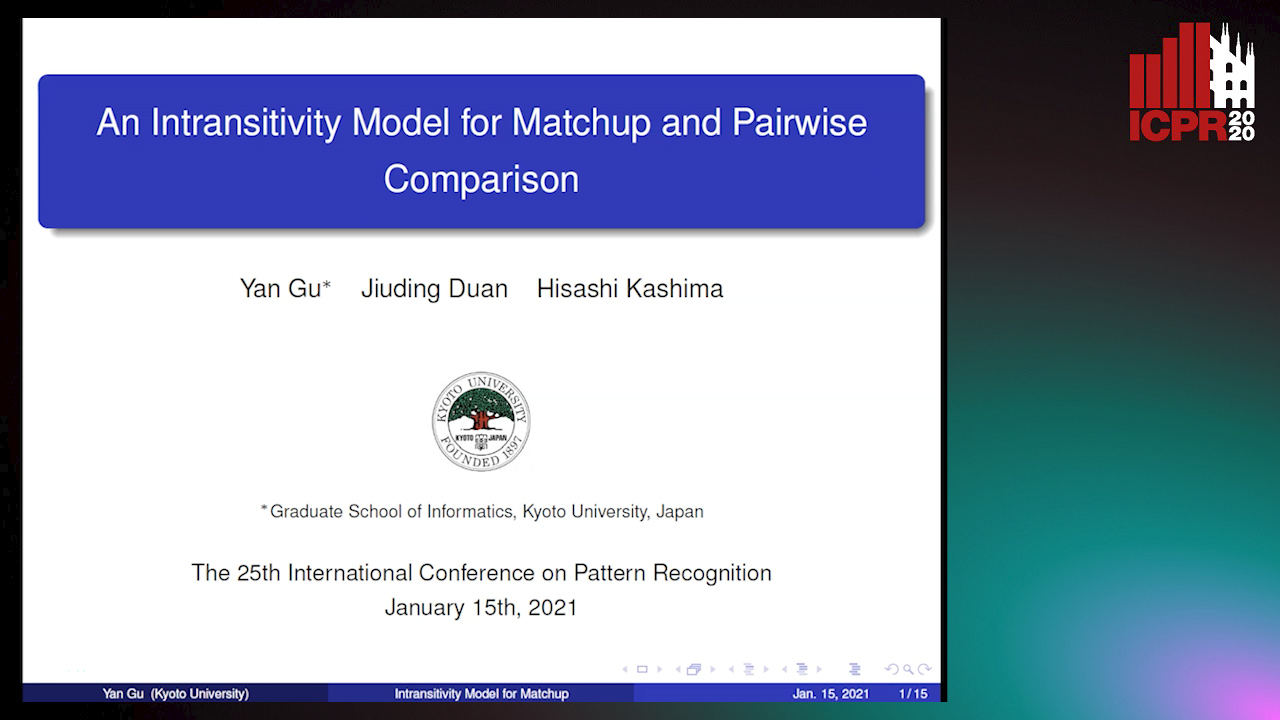
Auto-TLDR; Blade-Chest: A Low-Rank Matrix Approach for Probabilistic Ranking of Players
Abstract Slides Poster Similar
Tensorized Feature Spaces for Feature Explosion
Ravdeep Pasricha, Pravallika Devineni, Evangelos Papalexakis, Ramakrishnan Kannan
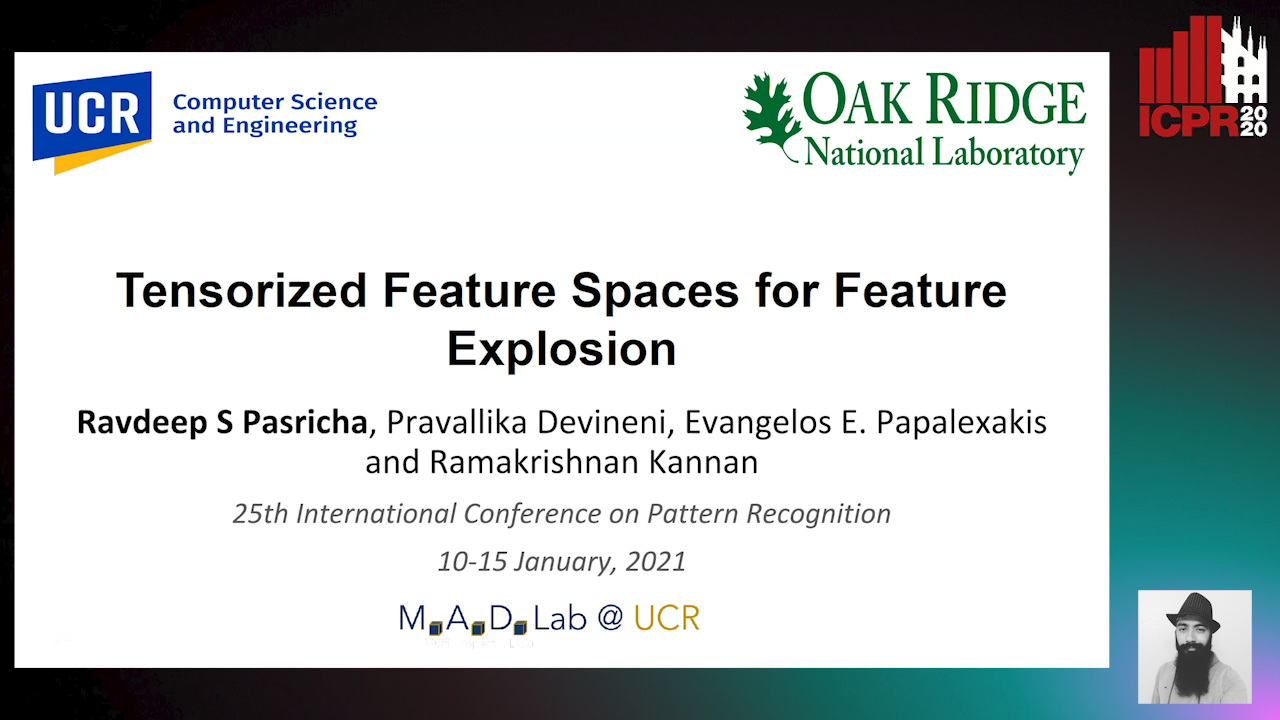
Auto-TLDR; Tensor Rank Decomposition for Hyperspectral Image Classification
Abstract Slides Poster Similar
Creating Classifier Ensembles through Meta-Heuristic Algorithms for Aerial Scene Classification
Álvaro Roberto Ferreira Jr., Gustavo Gustavo Henrique De Rosa, Joao Paulo Papa, Gustavo Carneiro, Fabio Augusto Faria

Auto-TLDR; Univariate Marginal Distribution Algorithm for Aerial Scene Classification Using Meta-Heuristic Optimization
Abstract Slides Poster Similar
Temporal Pattern Detection in Time-Varying Graphical Models
Federico Tomasi, Veronica Tozzo, Annalisa Barla

Auto-TLDR; A dynamical network inference model that leverages on kernels to consider general temporal patterns
Abstract Slides Poster Similar
A Multi-Task Multi-View Based Multi-Objective Clustering Algorithm
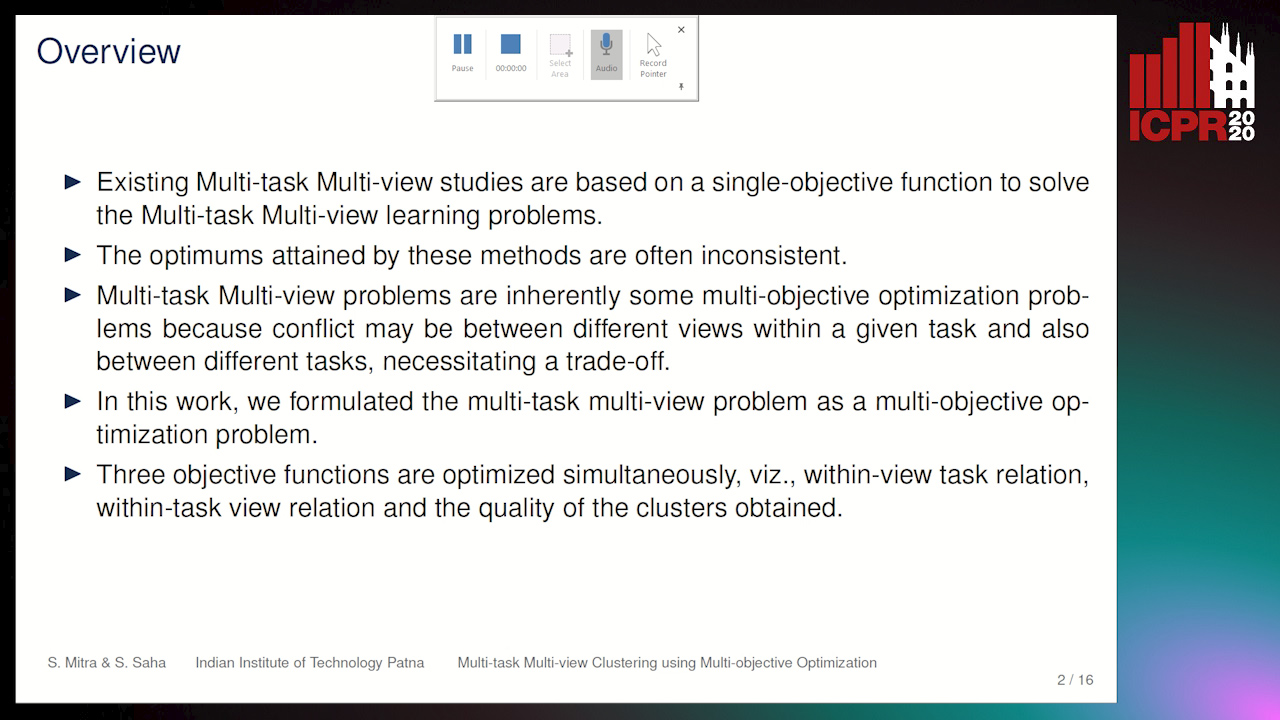
Auto-TLDR; MTMV-MO: Multi-task multi-view multi-objective optimization for multi-task clustering
Abstract Slides Poster Similar
Learning to Prune in Training via Dynamic Channel Propagation
Shibo Shen, Rongpeng Li, Zhifeng Zhao, Honggang Zhang, Yugeng Zhou

Auto-TLDR; Dynamic Channel Propagation for Neural Network Pruning
Abstract Slides Poster Similar
Scientific Document Summarization using Citation Context and Multi-objective Optimization
Naveen Saini, Sushil Kumar, Sriparna Saha, Pushpak Bhattacharyya
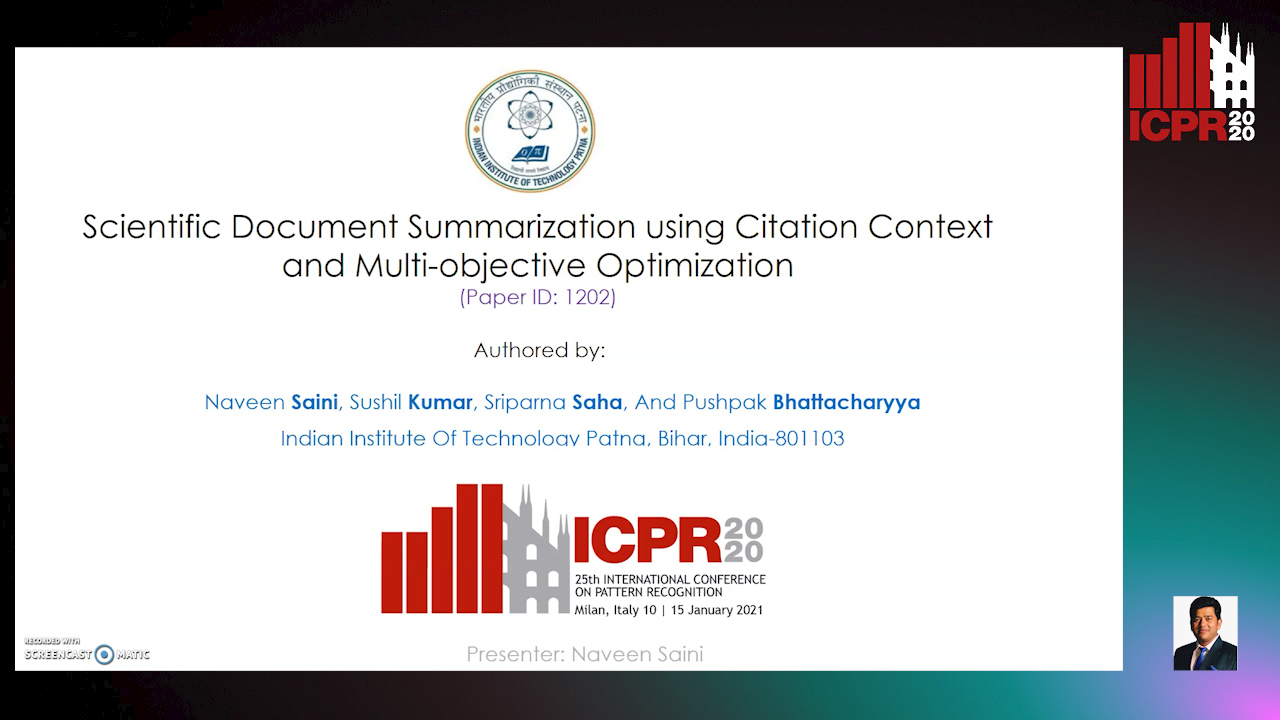
Auto-TLDR; SciSumm Summarization using Multi-Objective Optimization
Abstract Slides Poster Similar
Explain2Attack: Text Adversarial Attacks via Cross-Domain Interpretability
Mahmoud Hossam, Le Trung, He Zhao, Dinh Phung
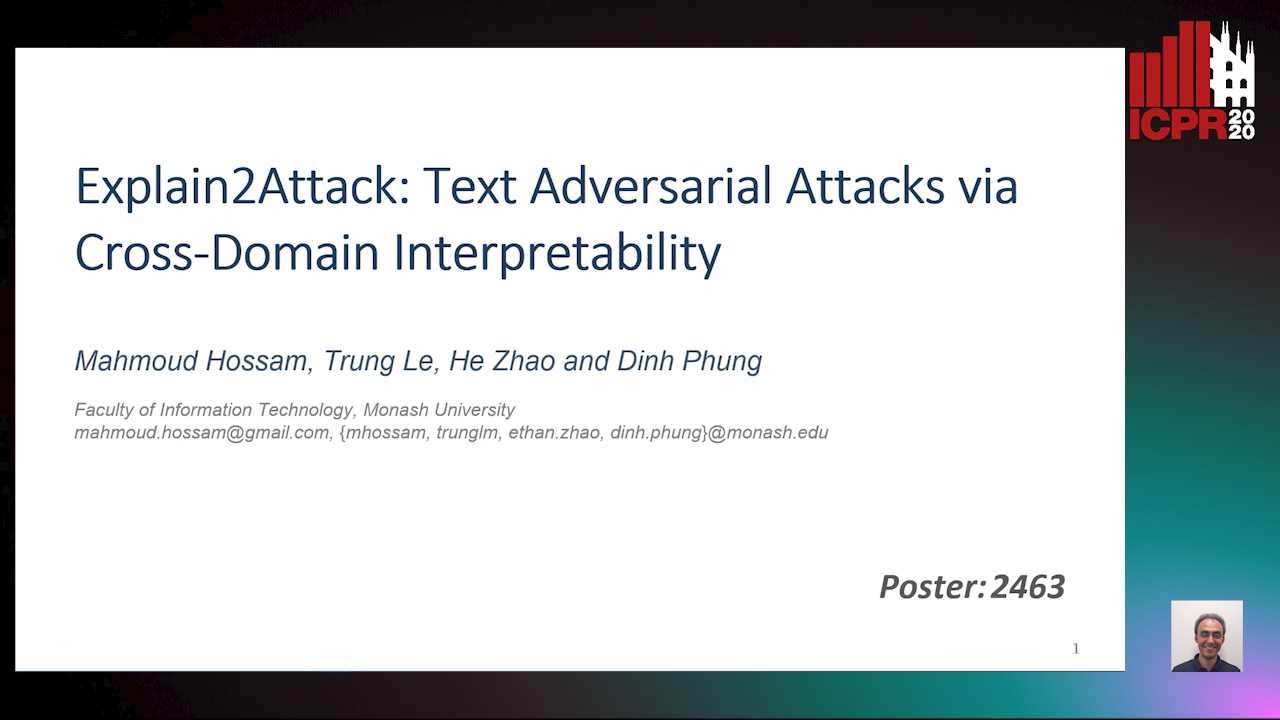
Auto-TLDR; Transfer2Attack: A Black-box Adversarial Attack on Text Classification
Abstract Slides Poster Similar
Verifying the Causes of Adversarial Examples
Honglin Li, Yifei Fan, Frieder Ganz, Tony Yezzi, Payam Barnaghi

Auto-TLDR; Exploring the Causes of Adversarial Examples in Neural Networks
Abstract Slides Poster Similar